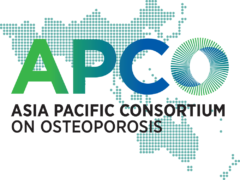About osteoporosis
About Osteoporosis
About Fragility Fractures
- International Osteoporosis Foundation (IOF). What is Osteoporosis. [cited Jan, 2020]; Available from: https://www.iofbonehealth.org/what-is-osteoporosis.
- National Institute for Health and Care Excellence. Osteoporosis assessing the risk of fragility fracture. [cited Jan, 2020]; Available from: https://www.nice.org.uk/guidance/cg146/resources/osteoporosis-assessing- the-risk-of-fragility-fracture-pdf-35109574194373.
- International Osteoporosis Foundation (IOF). Osteoporosis Facts and Statistics. [cited Jan, 2020]; Available from: https://www.iofbonehealth.org/facts-and- statistics/calcium-studies-map.
- Assessment of fracture risk and its application to screening for postmenopausal osteoporosis. Report of a WHO Study Group. World Health Organ Tech Rep Ser, 1994. 843: p. 1-129.
- Sözen, T., L. Özışık, and N.Ç. Başaran, An overview and management of osteoporosis. European journal of rheumatology, 2017. 4(1): p. 46-56.
- The Economist Intelligence Unit, Ageing with strength: Addressing fragility fractures in Asia-Pacific. 2019.
- Osteoporosis Australia. What you need to know about osteoporosis. Consumer guide. [cited Jan, 2020]; Available from: https://www.osteoporosis.org.au/sites/default/files/files/oa_consumer_ed2_Aug2014.pdf.
- Office of the Surgeon General (US). Bone Health and Osteoporosis. A Report of the Surgeon General. Rockville (MD): Office of the Surgeon General (US) - The Burden of Bone Disease. 2004. [cited Jan, 2020]; Available from: https://www.ncbi.nlm.nih.gov/books/NBK45502/.
- Cheung, C.-L., et al., An updated hip fracture projection in Asia: The Asian Federation of Osteoporosis Societies study. Osteoporosis and sarcopenia, 2018. 4(1): p. 16-21.
- Unnanuntana, A., et al., The assessment of fracture risk. The Journal of Bone and Joint Surgery. American volume, 2010. 92(3): p. 743-753.
- Feldstein, A., et al., Bone Mineral Density Measurement and Treatment for Osteoporosis in Older Individuals With Fractures: A Gap in Evidence-Based Practice Guideline Implementation. Archives of Internal Medicine, 2003. 163(18): p. 2165-2172.
- Australian and New Zealand Bone and Mineral Society. Position Paper on Secondary Fracture Prevention. 2015 [cited Jan, 2020]; Available from: https://www.anzbms.org.au/downloads/ANZBMSPositionPaperonSecondaryFr acturePreventionApril2015.pdf.
- Sanchez-Riera, L. and N. Wilson, Fragility Fractures & Their Impact on Older People. Best Pract Res Clin Rheumatol, 2017. 31(2): p. 169-191.
- National Institute of Arthritis and Musculoskeletal and Skin Diseases. Smoking and bone health. [cited Jan, 2020]; Available from: https://www.bones.nih.gov/health-info/bone/osteoporosis/conditions- behaviors/bone-smoking.
- Cosman, F., et al., Clinician's Guide to Prevention and Treatment of Osteoporosis. Osteoporosis international: a journal established as result of cooperation between the European Foundation for Osteoporosis and the National Osteoporosis Foundation of the USA, 2014. 25(10): p. 2359-2381.
- Australian Institute of Health and Welfare. Musculoskeletal fact sheet. Osteoporosis. [cited Jan, 2020]; Available from: https://www.aihw.gov.au/getmedia/61866386-568b-41fa-93e4- 090ad201ab2b/phe187-osteoporosis-factsheet.pdf.aspx.
- International Osteoporosis Foundation (IOF). Capture the fracture. [cited Jan, 2020]; Available from: https://www.capturethefracture.org/about.
- Madureira, M.M., R.M. Ciconelli, and R.M.R. Pereira, Quality of life measurements in patients with osteoporosis and fractures. Clinics (Sao Paulo, Brazil), 2012. 67(11): p. 1315-1320.
- Stolnicki, B. and L.G. Oliveira, For the first fracture to be the last. Revista brasileira de ortopedia, 2016. 51(2): p. 121-126.
- Ebeling, P., et al., Secondary prevention of fragility fractures in Asia Pacific: an educational initiative. Osteoporosis International, 2019.
